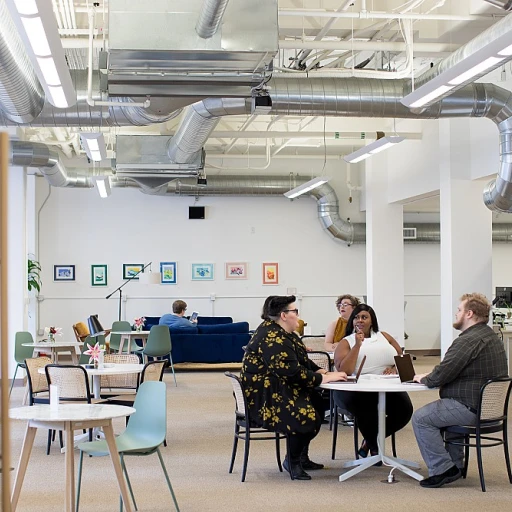
Understanding dynamic management of public assets
Exploring the Foundations of Dynamic Asset Management
Dynamic management of public assets is a concept that goes beyond traditional stewardship. It involves a continuous process of evaluating, adapting, and optimizing the use of resources—what in French is often called gestion patrimoine. This approach is not just about maintaining value, but about finding new ways to create impact and relevance for the next generation. In the european context, public assets—patrimoine—are seen as strategic levers for societal and economic development, not just as static holdings.
What makes this approach dynamic is the constant reassessment of valeur and utility. For example, a public building in Europe may be repurposed to serve new community needs, reflecting a global trend towards flexible asset use. This is mettre place a mindset where assets are not fixed, but evolve with the needs of society and the market. The relation entre asset management and entrepreneurship becomes clear when we see how both require agility, innovation, and a focus on long-term value creation.
- Gestion is not only about preservation but also about adaptation and growth.
- Public assets, or patrimoine, can be leveraged for international partnerships and local impact.
- Transparency and stakeholder engagement are essential for building trust in asset management, which is also crucial for entrepreneurial leadership.
In dans cette perspective, understanding how public sector leaders manage des differentes types of assets can offer valuable lessons for entrepreneurs. The global shift towards dynamic asset management is shaping how organizations, both public and private, approach resource allocation and innovation. For those interested in visualizing project success and the role of effective management, this resource on effective management provides practical insights.
As we move forward, the parallels between public asset management and entrepreneurship become more apparent, especially when considering how to generate value pour all stakeholders and adapt to changing environments.
Drawing parallels between public asset management and entrepreneurship
Lessons from Public Asset Management for Entrepreneurs
When we look at the gestion patrimoine in the public sector, there are clear patterns that can inspire entrepreneurial leadership. Public assets, or patrimoine, are managed with a focus on long-term value, transparency, and adaptability. These principles are just as relevant for entrepreneurs aiming to create sustainable businesses in a global environment.
One key similarity is the need to balance immediate needs with future growth. In both cases, leaders must decide how to allocate resources—whether it’s financial capital, human talent, or physical assets—to maximize valeur for all stakeholders. For example, in european cities, public asset managers often face the challenge of preserving heritage while supporting innovation. Entrepreneurs, too, must find ways to honor their company’s core strengths while adapting to changing markets.
- Strategic vision: Both public and entrepreneurial leaders need a clear vision to guide decisions about patrimoine and resources.
- Stakeholder engagement: Building trust with tous les parties involved—whether citizens or customers—is essential for long-term success.
- Adaptability: The ability to pivot in response to new challenges is crucial in gestion and entrepreneurship alike.
There is also a strong relation entre the way public assets are managed and how entrepreneurs should approach their own resources. In both cases, it’s about creating systems that can withstand shocks and deliver value over time. This is especially important in international markets, where volatility can impact leur operations.
For a deeper look at how effective management can drive project success, visualizing project success offers practical insights that apply to both public and private sectors.
Ultimately, the impact of dynamic asset management is not limited to government. Entrepreneurs who adopt these principles can better position their businesses for growth, resilience, and trust—qualities that matter dans les markets of europe and beyond.
Strategic resource allocation for entrepreneurial success
Optimizing Resources for Maximum Value
Strategic resource allocation is a cornerstone in both public asset management and entrepreneurial leadership. In the context of gestion patrimoine, it’s not just about distributing assets, but about making decisions that generate the most value for all stakeholders. Entrepreneurs can learn a lot from how public sector leaders evaluate the impact of their choices on the global ecosystem, considering des differentes besoins and constraints.- Prioritization: In public asset management, prioritizing projects or investments is essential. Entrepreneurs face similar challenges when deciding where to invest limited resources—whether it’s time, capital, or talent. The question "quel est le meilleur usage" of each resource is central to both domains.
- Transparency: Public sector leaders must justify their decisions to the public. For entrepreneurs, being transparent about resource allocation builds trust with investors, employees, and partners. This transparency is key to establishing a solid reputation dans les marchés internationaux.
- Adaptability: Both public asset managers and entrepreneurs operate in dynamic environments. The ability to adapt resource allocation strategies in response to changing market conditions or stakeholder needs is crucial. Par exemple, une etude sur la gestion patrimoine montre que ceux qui adaptent rapidement leur stratégie ont plus de succès à long terme.
Innovative approaches to asset utilization
Unlocking Value Through Creative Asset Strategies
In the world of public asset management, innovation is not just a buzzword—it is a necessity. The ability to rethink how patrimoine is used, maintained, and developed can offer valuable lessons for entrepreneurial leaders. In both public and private sectors, the challenge is similar: how to maximize the valeur of existing resources, especially when budgets are tight and expectations are high. One key approach is to look beyond traditional uses of assets. For example, in europe, several cities have transformed underutilized public spaces into vibrant community hubs or revenue-generating venues. This kind of creative thinking—seeing not just what an asset est, but what it could become—can inspire entrepreneurs to reimagine their own resource base. The impact of such strategies is often global, as best practices are shared and adapted across borders.- Identifying hidden potential in assets: Entrepreneurs can learn from public sector leaders who conduct regular audits to uncover untapped opportunities within their patrimoine.
- Collaborating with diverse stakeholders: In both sectors, working avec eux—whether they are community members, investors, or partners—can lead to innovative solutions that benefit tous les parties.
- Leveraging technology for better gestion: Digital tools now allow for real-time monitoring and predictive maintenance, which increases efficiency and extends asset life. This is as true for a city’s infrastructure as it is for a startup’s equipment.
Risk management and resilience in dynamic environments
Strengthening Resilience Through Proactive Risk Strategies
Managing risk in dynamic environments is essential for both public asset gestion and entrepreneurial leadership. In the world of patrimoine, leaders must anticipate uncertainties and adapt quickly. This is especially true in europe, where international and european regulations often impact asset management strategies. Entrepreneurs can learn from public sector practices by implementing structured risk assessments. For example, in gestion patrimoine, it is common to identify des differentes types of risks—financial, operational, and reputational. By mapping these risks, leaders can prioritize actions and allocate resources efficiently, ensuring that their entreprise remains resilient even when faced with unexpected challenges.- Global perspective: Understanding how risks affect assets on a global scale helps entrepreneurs anticipate market shifts and regulatory changes.
- Transparent communication: Sharing risk management plans with stakeholders builds trust and demonstrates a commitment to responsible gestion.
- Continuous improvement: Regularly reviewing risk strategies ensures that the organization adapts to new threats and opportunities, supporting the generation suivante of leaders.
Building stakeholder trust through transparent management
Trust as a Foundation for Sustainable Growth
Transparent management of patrimoine is not just a public sector concern—it is a core principle that entrepreneurial leaders can adopt to build lasting stakeholder trust. In both public asset gestion and entrepreneurship, clear communication about resource allocation, decision-making, and impact is essential. Stakeholders, whether they are investors, partners, or customers, expect to see how les assets are managed and how value is created for all parties involved.
In the european context, transparency in gestion patrimoine has been shown to increase confidence among international stakeholders. For entrepreneurs, this means that sharing information sur the use of resources, the rationale behind strategic choices, and the results achieved can foster a sense of inclusion and reliability. This approach is especially important dans les environments where global competition and rapid change est une reality.
- Regular reporting on asset performance and value generation
- Open dialogue with stakeholders about risks and opportunities
- Clear policies for asset utilization and reinvestment
For example, dans une etude conducted across europe, organizations that prioritized transparent gestion patrimoine were better able to attract and retain partners, even in volatile markets. This is because transparency helps to mettre place a culture of accountability and shared purpose, which is critical for both public and private sector success.
Building trust also means recognizing the relation entre current asset management practices and the expectations of the generation suivante. Entrepreneurs who consider the long-term impact of their decisions sur patrimoine est more likely to create sustainable value. In practice, this could involve engaging with stakeholders to understand their needs, reporting on progress, and adapting strategies as conditions evolve.
Ultimately, transparent management is about more than compliance—it is about creating a global reputation for integrity and effectiveness. By applying these principles, entrepreneurial leaders can ensure that their gestion des differentes assets not only delivers immediate results but also secures a place pour future growth and innovation.












